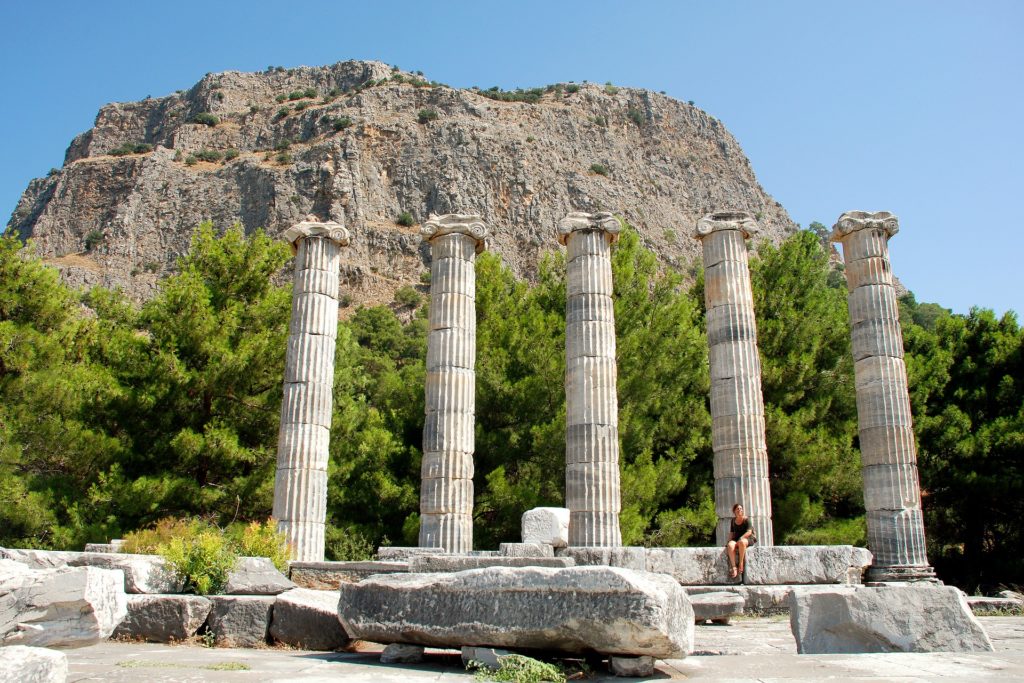 When did the Roman Empire fall? To answer this question correctly we should precise first which Roman Empire is meant the Western or the Eastern, because after the death of Emperor Theodosius I in 395 AD the two parts of the once mightiest state of the Antiquity existed independently. The 4 September 476 AD is considered as a date of official fall of the Western Roman Empire – on this day Odoacer, a Germanic chieftain, deposed Romulus Augustulus, the last emperor, and sent imperial regalia to Constantinople to the Eastern Roman Emperor Zeno. The Eastern Roman Empire under the name of the Byzantine Empire existed till 1453 when Constantinople was taken by Ottoman Turks and the last Byzantine Emperor Constantine XI was killed.
When did the Roman Empire fall? To answer this question correctly we should precise first which Roman Empire is meant the Western or the Eastern, because after the death of Emperor Theodosius I in 395 AD the two parts of the once mightiest state of the Antiquity existed independently. The 4 September 476 AD is considered as a date of official fall of the Western Roman Empire – on this day Odoacer, a Germanic chieftain, deposed Romulus Augustulus, the last emperor, and sent imperial regalia to Constantinople to the Eastern Roman Emperor Zeno. The Eastern Roman Empire under the name of the Byzantine Empire existed till 1453 when Constantinople was taken by Ottoman Turks and the last Byzantine Emperor Constantine XI was killed.
The main concerns of Roman rulers after the end of imperial expansion in the second century were to control and defend huge territories conquered and colonized by their predecessors. This could be achieved only through military power that’s why successful commanders and generals became major players on political arena. The merciless internal fight of the so called “barracks emperors” between 235 and 284 AD left the frontiers of the Empire open to devastating barbarian invasions. Diocletian (284-305) re-established some order but recognized that huge territory could not be managed by a single ruler from Rome and introduced the Tetrarchy dividing the Empire into Western and Eastern halves each under control of an augustus assisted by a caesar. The next Emperor Constantine (306-337) decided to move the centre of power of his Empire from Rome to a newly built capital Constantinople on the Bosporus. Heavy burden of defense expenses ruined gradually Roman taxpayers and led to demographic crisis. At the same time the moral of Roman citizens was somewhat undermined by slow transition from classical pagan cults to Christianity which was legalized by Constantine and adopted as an official religion by Theodosius I in 380. Step by step barbarian warriors became the main source of recruits for the Imperial army. Many of them attained the rank of commanders and considerable political influence.
By the end of the 4th century Roman authorities were unable to prevent large groups of migrating barbarians from crossing the borders and allowed some of them to settle on the imperial territories under the condition of defending them from other invaders. New settlers proved to be troublesome, for instance in 378 near Adrianople rebellious Goths smashed the Eastern Roman army and killed the Emperor Valens. In 410, the same Goths led by Alaric sacked Rome which was not already the capital of the Western Empire, because since 402 this role was played by Ravenna. By the end of 406 large quantities of Vandals, Suevi and Alans crossed the Rhine and moved to Gaul. By 430 the Visigoths settled in Aquitania and Spain. In 429 Vandals moved to North Africa and occupied Cartage. At the same time Francs settled in Northern Gaul. In 451 the invasion of Huns led by Attila was stopped by joint efforts of barbarian and Roman troops in the battle of Catalanean fields. In 455, Vandals plundered Rome for the second time. In such a way, by 476 the entire territory of the Western Roman Empire was under control of barbarian population which started to create their own kingdoms.